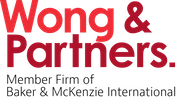11 October, 2017
Insurance companies and takaful operators have the liberty to price premiums based on their own risk assessment and profiling of policyholders, and have the ability to take into account a more comprehensive range of factors such as the vehicle’s safety and security features, the vehicle’s duration on the road, the vehicle’s geographical location and traffic offenses on record.
In the first phase that commenced on 1 July 2016, insurance companies and takaful operators were given the flexibility to progressively offer new products to consumers at market rates, as opposed to tariff rates. In the next phase of liberalization that commenced on 1 July 2017, insurance companies and takaful operators are now free to price premiums individually in respect of motor comprehensive and motor third party fire and theft products.
For the past three decades, the premiums that insurance companies and takaful operators can charge to consumers have been regulated by a tariff structure. With an aim to deregulate the pricing of motor and fire products and to transition into a fully liberalized marketplace, Bank Negara Malaysia (that is, the Central Bank of Malaysia) (BNM) announced the Phased Liberalization of the Motor and Fire Tariffs in March 2016.
While on the one hand, the flexibility accorded to insurance companies and takaful operators to price their own premiums may lead to greater price competition, production innovation and customized coverage limits to the benefit of consumers, there is equally a risk of sharp upward premium adjustments and reduced access or affordability to basic protection or compulsory lines, to the detriment of consumers.
Therefore, insurance companies and takaful operators are required to have in place prudent risk and governance management and practices, and also fair business practices and adequate disclosures. New products may only be introduced to the market after the General Insurance Association of Malaysia (PIAM) or Malaysian Takaful Association (MTA) approval is obtained in respect of the contract of insurance or takaful for the product (as the case may be). Further, with the transition from the tariff structure to market-based pricing, the pricing policy must be clearly defined and consistent with its risk appetite, and BNM approval is required for more aggressive premium pricing (for example, where the premium or takaful contribution fall 10% above or below current premiums in respect of comprehensive and motor third party fire and theft products).
The phased approach allows time for consumers and industry to ease into a laissez faire operating environment. The progress of liberalization will be reviewed in 2019 with an assessment of the impact on consumers and industry before full liberalization takes place.
For further information, please contact:





